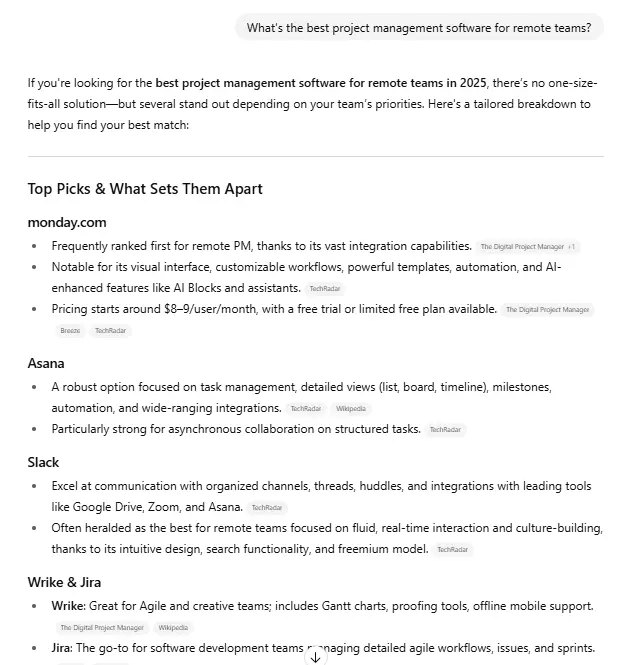How Long Should An SEO Migration Take? [Study] via @sejournal, @TaylorDanRW
In this study and learn to provide better estimations and communications with non-SEO stakeholders of their migration projects. The post How Long Should An SEO Migration Take? [Study] appeared first on Search Engine Journal.
![How Long Should An SEO Migration Take? [Study] via @sejournal, @TaylorDanRW](https://www.searchenginejournal.com/wp-content/uploads/2023/07/seo-migration-1-64bfa73cc0c08-sej.png)
Website migrations, specifically domain migrations, are often seen as one of the more complex parts of SEO.
As SEO pros, we are tasked with mitigating as many risks and variables as possible so that the business doesn’t see organic performance issues – either at all or for a longer than necessary period of time.
Over the years, I’ve sat in a number of pitch meetings for migration projects, and I’ve heard the words:
“The other agency said there should be no traffic loss at all, it will be like a light switch.”
More often than not, the prospect has gone with the salesperson’s pitch, and monitoring the website in Ahrefs and other tools, you see situations like this:
 Image created by Dan Taylor, July 2023
Image created by Dan Taylor, July 2023
A domain migration that hasn’t recovered organic traffic more than two years after migration.
Most businesses can’t sustain an organic traffic drop of that magnitude for that length of time and not feel a serious impact on business operations.
So this leads us back to the question we’re asked by stakeholders when scoping and pitching for SEO migration projects:
How long should an SEO migration take?
Study Methodology
The aim of this study is to research and provide a data-led answer to “How long should an SEO migration take,” to help both in-house SEO pros and SEO consultants provide better estimations and communications with non-SEO stakeholders of their migration projects.
To answer this, we took a sample of 171 domain migrations (data provided by Ahrefs, supplemented by migration examples provided by other SEOs, as well as our own work history). We measured, using third-party tools, the number of days that it took Domain B (the new domain) to achieve the same estimated organic traffic volume as Domain A (the old domain).
Helping me process this data was my colleague and fellow Search Engine Journal author Alireza Esmikhani.
Bias Factors
Bias in a quantitative study refers to systematic errors that can significantly skew the results, leading to incorrect conclusions.
These biases can arise at any stage of the research process, such as in the design, data collection, analysis, and interpretation stages.
Bias undermines the validity and reliability of the study’s results and can lead to misleading conclusions.
Where possible, we have taken steps to mitigate any bias from impacting the study.
Selection Bias – We have worked to eliminate this as much as possible, with a high percentage of the data coming from Ahrefs (unfiltered) and an open request to the SEO community. This should negate our own inputs from sectors we specialize in. This has led to a variety of domains in a variety of sectors. Measurement Bias – As we’re using a third-party tool, the bias here is limited to the scope of the tool, database updates, and the keyword set. As we’re comparing two domains and making the assumption that they match in terms of the target keyword set, this bias should be mitigated. Confounding Bias – As we’re comparing date periods within the same tool, no correlations are being made in terms of data analysis. Publication Bias – This study was going to be published and submitted regardless of percentages/data findings. So this bias is mitigated.The data set contained domains of varying usage, from lead generation in SaaS, legal, and finance, to blogs, local retail, and ecommerce.
The split of English websites to non-English was around 70/30.
Study Findings
The key takeaways from the domain study are:
On average, it took 229 days for Domain B to show the same level of organic traffic as Domain A. The shortest times recorded were 16, 19, 22, 23, and 33 days respectively. Four of the migrations in the sample we classed as being “in progress,” as the migrations happened less than 150 days ago, and were steadily improving. 42% of domain migrations in the sample didn’t see organic traffic return to the same levels.From the original data set, there were a number of domains that had dropped and are now redirected to domain squatters/private domain sellers.
As these aren’t “genuine” domain migrations, and the new domain was never intended to maintain the same keywords and traffic, these have been discounted and not included in the data.
Why Do Migration Results Differ?
No two websites are the same, and there are several variables in a website migration we can control – and several we can’t.
The discourse around migrations in the SEO industry has really not changed for a number of years, with basic best practices being established and then layering the basics with situation-dependent needs to mitigate risks.
One of the latest developments in migration best practices came in June this year when John Mueller said that launching a new website prior to the migration could mitigate some risks.
As this was only a month ago, it’s too early for any meaningful tests to have come through to validate or indicate how early is early enough. But the theory makes sense as Google rebuilds its index on a page-by-page basis, so opening up new crawl paths and URLs ahead of time could speed up the initial Discover and Crawl phases.
Backlink Profiles & Migrations
Whilst crowd-sourcing domains for this study, I also asked the community why there are “time lags” in migrations, and Natalia Witczyk proposed the idea that it’s related to backlink profiles and how long it takes Google to process profile transference:
From my experience, for the rankings and traffic to be back to normal levels, the backlink profile has to be recrawled and the redirects have to be reflected.
That takes close to no time if the backlink profile is non-existent, so the return to normal traffic levels happens fast. If the backlink profile is extensive, there’s more to recrawl and that would take Google more time.
This prompted me to look at the total number of referring domains each domain had, and there is some correlation to this being the case, but with a large number of outliers – likely due to how the migration was carried out.
For more information and best practices on website migrations, I’d recommend reading the below articles:
Google shares advice on site migrations How Google Responds to a Site MoveMore resources:
How To Migrate A WordPress Site From One Host To Another Site Migration & SEO: Common Mistakes That Hurt Rankings The Ultimate SEO Audit ChecklistFeatured Image: Luis Molinero/Shutterstock

 ValVades
ValVades 
































